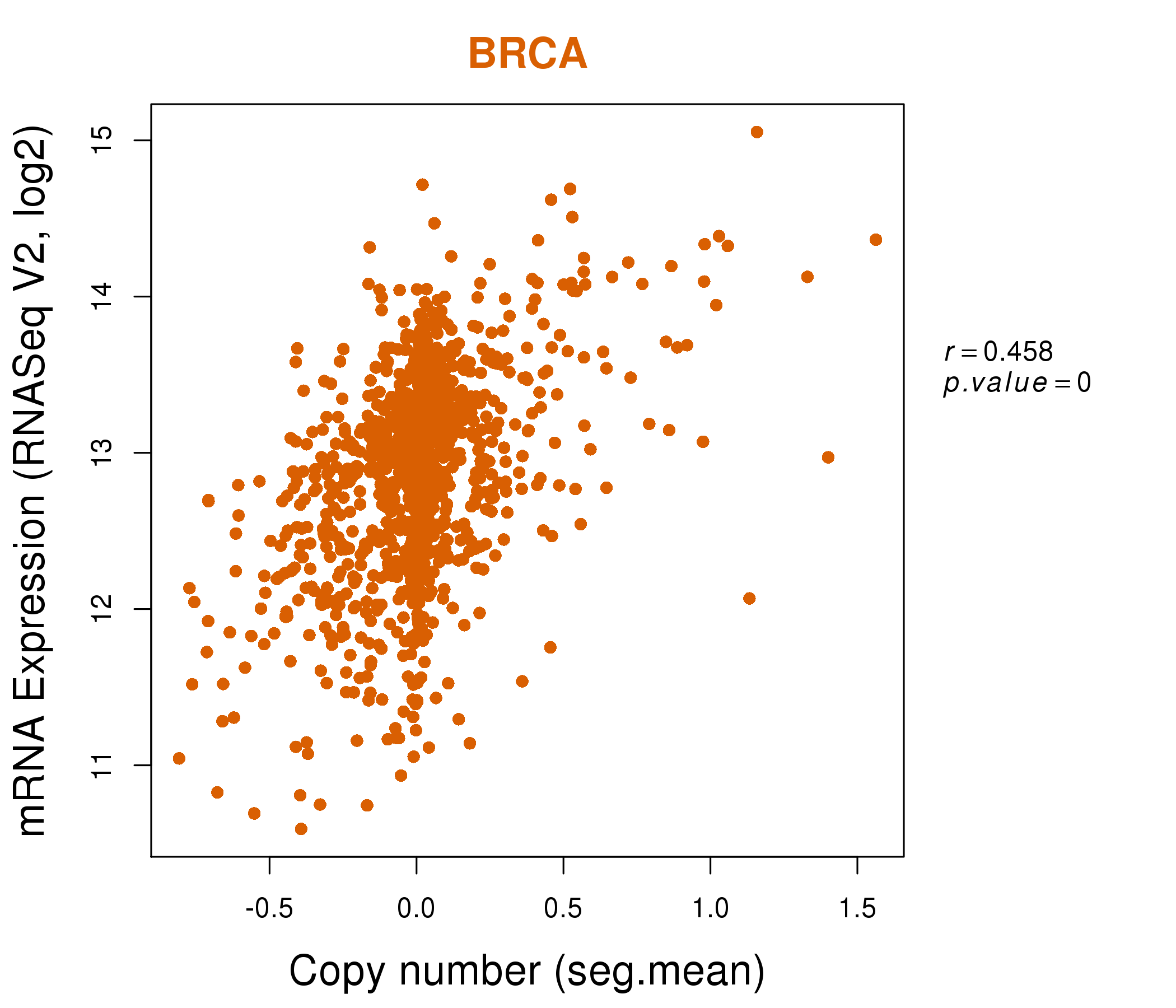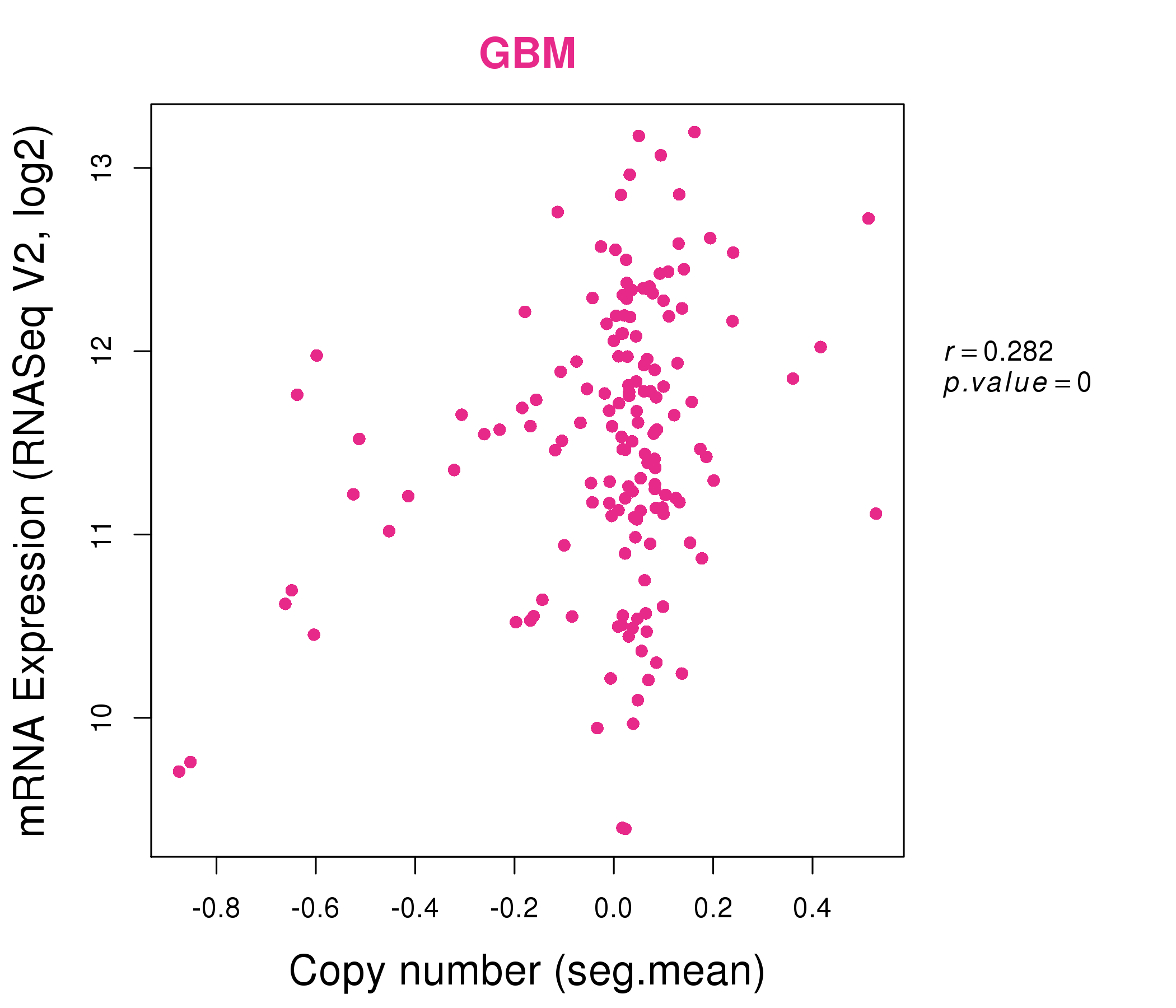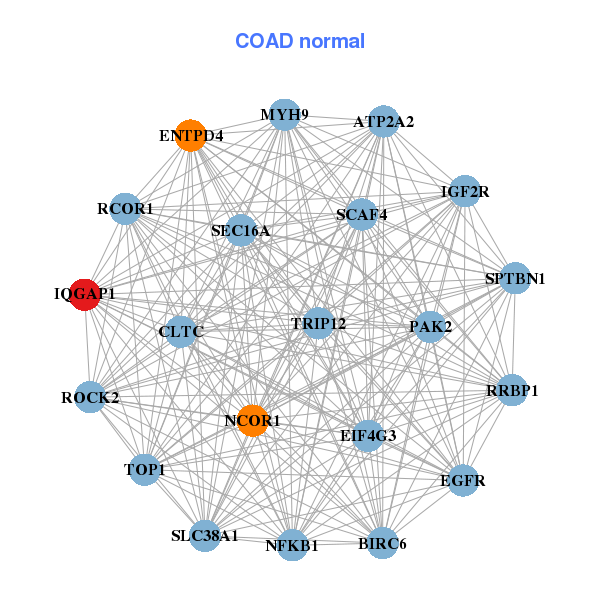|
|||||||||||||||||||||||||||||||||||||||||||||||||||||||||||||||||||||||||||||||||||||||||||||||||||||||||||||||||||||||||||||||||||||||||||||||||||||||||||||||||||||||||||||||||||||||||||||||||||||||||||||||||||||||||||||||||||||||||||||||||||||||||||||||||||||||||||||||||||||||||||||||||||||||||||||||||||||||||||||||||||||||||||||||||||
| |
| Phenotypic Information (metabolism pathway, cancer, disease, phenome) |
| |
| |
| Gene-Gene Network Information: Co-Expression Network, Interacting Genes & KEGG |
| |
|
| Gene Summary for IQGAP1 |
| Top |
| Phenotypic Information for IQGAP1(metabolism pathway, cancer, disease, phenome) |
| Cancer | CGAP: IQGAP1 |
| Familial Cancer Database: IQGAP1 | |
| * This gene is included in those cancer gene databases. |
|
|
|
|
|
| . | |||||||||||||||||||||||||||||||||||||||||||||||||||||||||||||||||||||||||||||||||||||||||||||||||||||||||||||||||||||||||||||||||||||||||||||||||||||||||||||||||||||||||||||||||||||||||||||||||||||||||||||||||||||||||||||||||||||||||||||||||||||||||||||||||||||||||||||||||||||||||||||||||||||||||||||||||||||||||||||||||||||||||||||
Oncogene 1 | Significant driver gene in | ||||||||||||||||||||||||||||||||||||||||||||||||||||||||||||||||||||||||||||||||||||||||||||||||||||||||||||||||||||||||||||||||||||||||||||||||||||||||||||||||||||||||||||||||||||||||||||||||||||||||||||||||||||||||||||||||||||||||||||||||||||||||||||||||||||||||||||||||||||||||||||||||||||||||||||||||||||||||||||||||||||||||||||||||||
| cf) number; DB name 1 Oncogene; http://nar.oxfordjournals.org/content/35/suppl_1/D721.long, 2 Tumor Suppressor gene; https://bioinfo.uth.edu/TSGene/, 3 Cancer Gene Census; http://www.nature.com/nrc/journal/v4/n3/abs/nrc1299.html, 4 CancerGenes; http://nar.oxfordjournals.org/content/35/suppl_1/D721.long, 5 Network of Cancer Gene; http://ncg.kcl.ac.uk/index.php, 1Therapeutic Vulnerabilities in Cancer; http://cbio.mskcc.org/cancergenomics/statius/ |
| REACTOME_INTEGRATION_OF_ENERGY_METABOLISM | |
| OMIM | |
| Orphanet | |
| Disease | KEGG Disease: IQGAP1 |
| MedGen: IQGAP1 (Human Medical Genetics with Condition) | |
| ClinVar: IQGAP1 | |
| Phenotype | MGI: IQGAP1 (International Mouse Phenotyping Consortium) |
| PhenomicDB: IQGAP1 | |
| Mutations for IQGAP1 |
| * Under tables are showing count per each tissue to give us broad intuition about tissue specific mutation patterns.You can go to the detailed page for each mutation database's web site. |
| - Statistics for Tissue and Mutation type | Top |
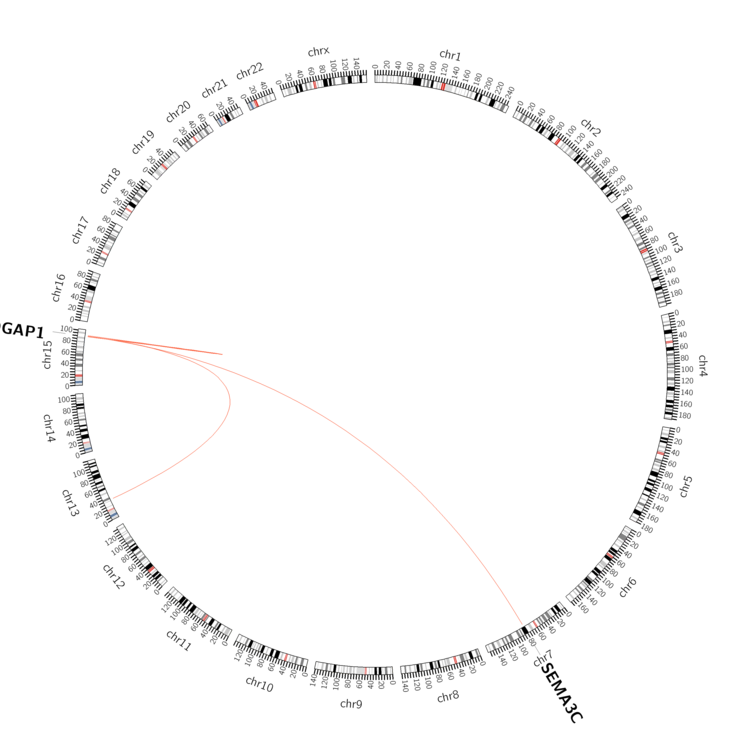 |
| - For Inter-chromosomal Variations |
| * Inter-chromosomal variantions includes 'interchromosomal amplicon to amplicon', 'interchromosomal amplicon to non-amplified dna', 'interchromosomal insertion', 'Interchromosomal unknown type'. |
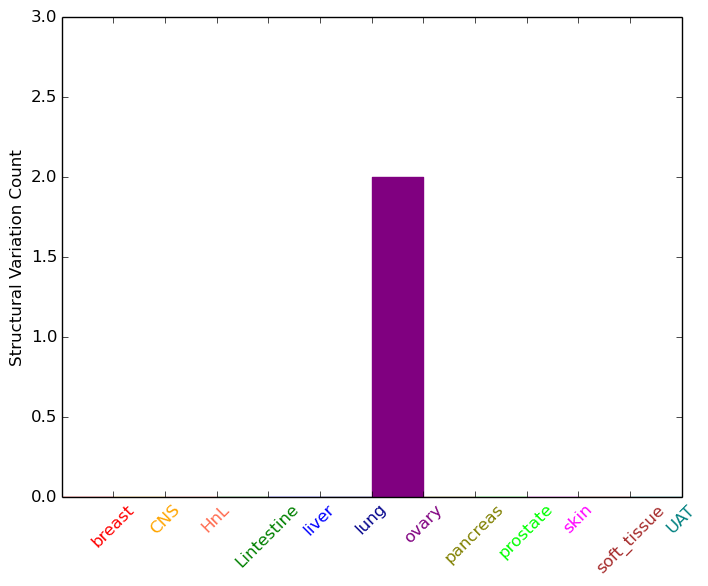 |
| - For Intra-chromosomal Variations |
| * Intra-chromosomal variantions includes 'intrachromosomal amplicon to amplicon', 'intrachromosomal amplicon to non-amplified dna', 'intrachromosomal deletion', 'intrachromosomal fold-back inversion', 'intrachromosomal inversion', 'intrachromosomal tandem duplication', 'Intrachromosomal unknown type', 'intrachromosomal with inverted orientation', 'intrachromosomal with non-inverted orientation'. |
 |
| Sample | Symbol_a | Chr_a | Start_a | End_a | Symbol_b | Chr_b | Start_b | End_b |
| NS | IQGAP1 | chr15 | 90981137 | 90981137 | chr15 | 92246749 | 92246749 | |
| ovary | IQGAP1 | chr15 | 90946597 | 90946617 | chr15 | 90521968 | 90521988 | |
| ovary | IQGAP1 | chr15 | 90947785 | 90947805 | IQGAP1 | chr15 | 90944478 | 90944498 |
| ovary | IQGAP1 | chr15 | 90990219 | 90990239 | IQGAP1 | chr15 | 90940096 | 90940116 |
| ovary | IQGAP1 | chr15 | 91013039 | 91013059 | chr15 | 90522635 | 90522655 | |
| ovary | IQGAP1 | chr15 | 91028851 | 91028871 | SEMA3C | chr7 | 80519023 | 80519043 |
| cf) Tissue number; Tissue name (1;Breast, 2;Central_nervous_system, 3;Haematopoietic_and_lymphoid_tissue, 4;Large_intestine, 5;Liver, 6;Lung, 7;Ovary, 8;Pancreas, 9;Prostate, 10;Skin, 11;Soft_tissue, 12;Upper_aerodigestive_tract) |
| * From mRNA Sanger sequences, Chitars2.0 arranged chimeric transcripts. This table shows IQGAP1 related fusion information. |
| ID | Head Gene | Tail Gene | Accession | Gene_a | qStart_a | qEnd_a | Chromosome_a | tStart_a | tEnd_a | Gene_a | qStart_a | qEnd_a | Chromosome_a | tStart_a | tEnd_a |
| L33075 | CAMK2D | 3 | 400 | 4 | 114615498 | 114615896 | IQGAP1 | 395 | 7573 | 15 | 90931501 | 91045470 | |
| BF351441 | TRPM3 | 1 | 329 | 9 | 73399027 | 73442924 | IQGAP1 | 325 | 378 | 15 | 91034620 | 91034673 | |
| U51007 | IQGAP1 | 7 | 128 | 15 | 91045344 | 91045467 | PSMD4 | 119 | 1323 | 1 | 151227233 | 151239865 | |
| AI991234 | SH3BGRL3 | 14 | 265 | 1 | 26607762 | 26608013 | IQGAP1 | 264 | 617 | 15 | 90934006 | 90934358 | |
| BF094243 | EFNA5 | 1 | 252 | 5 | 106880451 | 106880703 | IQGAP1 | 245 | 370 | 15 | 91034581 | 91034706 | |
| Top |
| Mutation type/ Tissue ID | brca | cns | cerv | endome | haematopo | kidn | Lintest | liver | lung | ns | ovary | pancre | prost | skin | stoma | thyro | urina | |||
| Total # sample | 4 | 1 | 1 | 1 | ||||||||||||||||
| GAIN (# sample) | 4 | 1 | 1 | 1 | ||||||||||||||||
| LOSS (# sample) |
| cf) Tissue ID; Tissue type (1; Breast, 2; Central_nervous_system, 3; Cervix, 4; Endometrium, 5; Haematopoietic_and_lymphoid_tissue, 6; Kidney, 7; Large_intestine, 8; Liver, 9; Lung, 10; NS, 11; Ovary, 12; Pancreas, 13; Prostate, 14; Skin, 15; Stomach, 16; Thyroid, 17; Urinary_tract) |
| Top |
|
 |
| Top |
| Stat. for Non-Synonymous SNVs (# total SNVs=101) | (# total SNVs=27) |
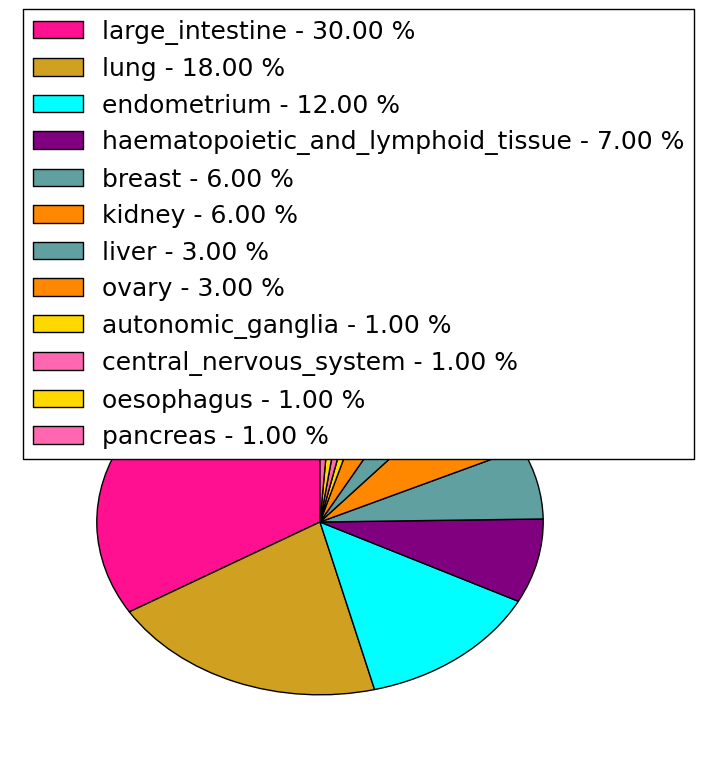 | 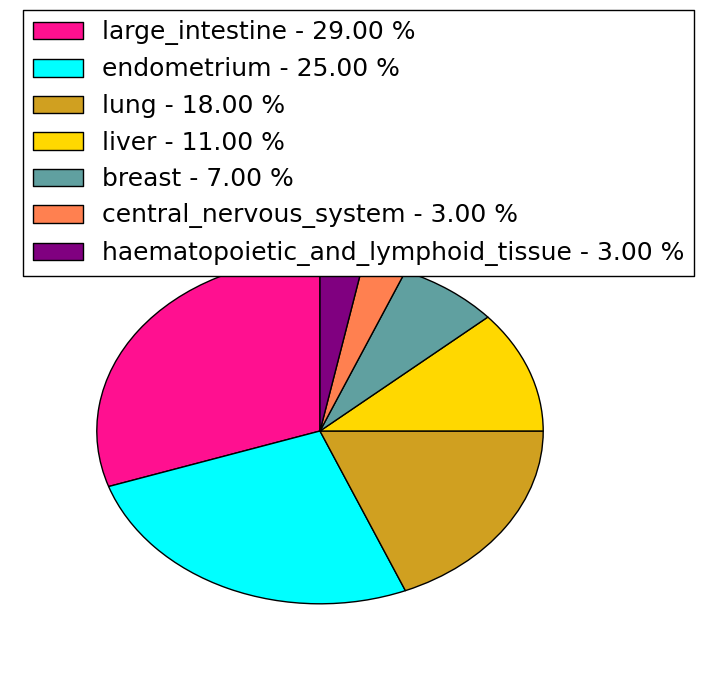 |
(# total SNVs=6) | (# total SNVs=0) |
 |
| Top |
| * When you move the cursor on each content, you can see more deailed mutation information on the Tooltip. Those are primary_site,primary_histology,mutation(aa),pubmedID. |
| GRCh37 position | Mutation(aa) | Unique sampleID count |
| chr15:91019925-91019925 | p.N941fs*8 | 3 |
| chr15:91017005-91017005 | p.R803H | 3 |
| chr15:90996087-90996087 | p.E415K | 3 |
| chr15:91017007-91017007 | p.S804P | 3 |
| chr15:91025277-91025277 | p.R1139W | 2 |
| chr15:91027453-91027453 | p.R1264W | 2 |
| chr15:91016137-91016137 | p.L748L | 2 |
| chr15:91019971-91019971 | p.Q954R | 2 |
| chr15:91017851-91017851 | p.Q904K | 2 |
| chr15:90931611-90931611 | p.A13V | 2 |
| Top |
|
 |
| Point Mutation/ Tissue ID | 1 | 2 | 3 | 4 | 5 | 6 | 7 | 8 | 9 | 10 | 11 | 12 | 13 | 14 | 15 | 16 | 17 | 18 | 19 | 20 |
| # sample | 5 | 1 | 25 | 1 | 5 | 5 | 1 | 7 | 8 | 2 | 2 | 9 | 14 | 1 | 14 | |||||
| # mutation | 6 | 1 | 26 | 1 | 5 | 6 | 1 | 7 | 8 | 2 | 2 | 10 | 15 | 1 | 17 | |||||
| nonsynonymous SNV | 3 | 1 | 21 | 1 | 4 | 5 | 1 | 5 | 6 | 2 | 2 | 7 | 12 | 1 | 11 | |||||
| synonymous SNV | 3 | 6 | 1 | 1 | 2 | 2 | 3 | 3 | 6 |
| cf) Tissue ID; Tissue type (1; BLCA[Bladder Urothelial Carcinoma], 2; BRCA[Breast invasive carcinoma], 3; CESC[Cervical squamous cell carcinoma and endocervical adenocarcinoma], 4; COAD[Colon adenocarcinoma], 5; GBM[Glioblastoma multiforme], 6; Glioma Low Grade, 7; HNSC[Head and Neck squamous cell carcinoma], 8; KICH[Kidney Chromophobe], 9; KIRC[Kidney renal clear cell carcinoma], 10; KIRP[Kidney renal papillary cell carcinoma], 11; LAML[Acute Myeloid Leukemia], 12; LUAD[Lung adenocarcinoma], 13; LUSC[Lung squamous cell carcinoma], 14; OV[Ovarian serous cystadenocarcinoma ], 15; PAAD[Pancreatic adenocarcinoma], 16; PRAD[Prostate adenocarcinoma], 17; SKCM[Skin Cutaneous Melanoma], 18:STAD[Stomach adenocarcinoma], 19:THCA[Thyroid carcinoma], 20:UCEC[Uterine Corpus Endometrial Carcinoma]) |
| Top |
| * We represented just top 10 SNVs. When you move the cursor on each content, you can see more deailed mutation information on the Tooltip. Those are primary_site, primary_histology, mutation(aa), pubmedID. |
| Genomic Position | Mutation(aa) | Unique sampleID count |
| chr15:91027453 | p.R1264W | 4 |
| chr15:91017007 | p.S804P | 3 |
| chr15:91030268 | p.F1369F | 2 |
| chr15:91019971 | p.Q954R | 2 |
| chr15:91017851 | p.Q904K | 2 |
| chr15:91029272 | p.D1311G | 2 |
| chr15:90996049 | p.D176D | 1 |
| chr15:91019954 | p.L1561L | 1 |
| chr15:90972889 | p.G402D | 1 |
| chr15:91009238 | p.L748L | 1 |
| * Copy number data were extracted from TCGA using R package TCGA-Assembler. The URLs of all public data files on TCGA DCC data server were gathered on Jan-05-2015. Function ProcessCNAData in TCGA-Assembler package was used to obtain gene-level copy number value which is calculated as the average copy number of the genomic region of a gene. |
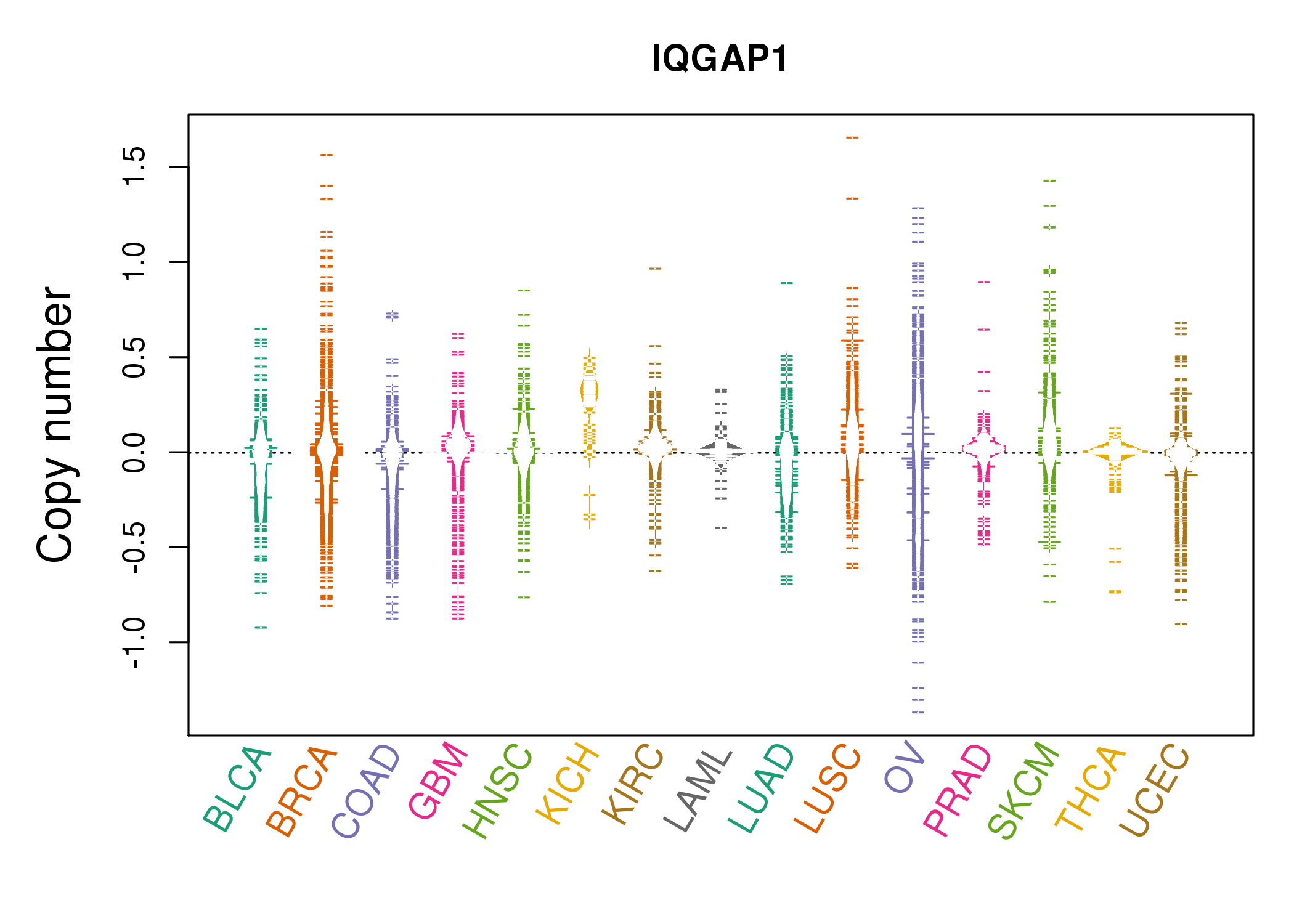 |
| cf) Tissue ID[Tissue type]: BLCA[Bladder Urothelial Carcinoma], BRCA[Breast invasive carcinoma], CESC[Cervical squamous cell carcinoma and endocervical adenocarcinoma], COAD[Colon adenocarcinoma], GBM[Glioblastoma multiforme], Glioma Low Grade, HNSC[Head and Neck squamous cell carcinoma], KICH[Kidney Chromophobe], KIRC[Kidney renal clear cell carcinoma], KIRP[Kidney renal papillary cell carcinoma], LAML[Acute Myeloid Leukemia], LUAD[Lung adenocarcinoma], LUSC[Lung squamous cell carcinoma], OV[Ovarian serous cystadenocarcinoma ], PAAD[Pancreatic adenocarcinoma], PRAD[Prostate adenocarcinoma], SKCM[Skin Cutaneous Melanoma], STAD[Stomach adenocarcinoma], THCA[Thyroid carcinoma], UCEC[Uterine Corpus Endometrial Carcinoma] |
| Top |
| Gene Expression for IQGAP1 |
| * CCLE gene expression data were extracted from CCLE_Expression_Entrez_2012-10-18.res: Gene-centric RMA-normalized mRNA expression data. |
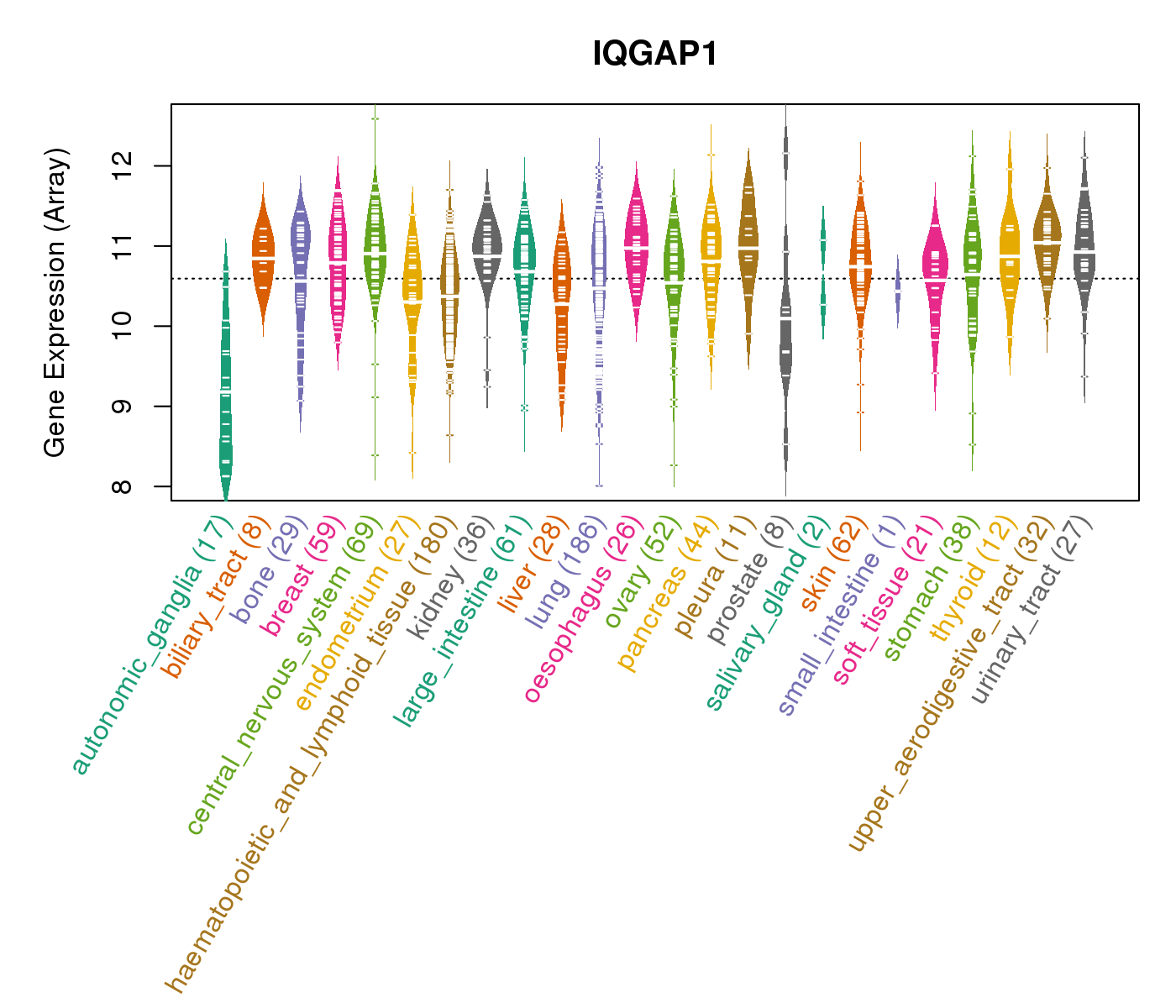 |
| * Normalized gene expression data of RNASeqV2 was extracted from TCGA using R package TCGA-Assembler. The URLs of all public data files on TCGA DCC data server were gathered at Jan-05-2015. Only eight cancer types have enough normal control samples for differential expression analysis. (t test, adjusted p<0.05 (using Benjamini-Hochberg FDR)) |
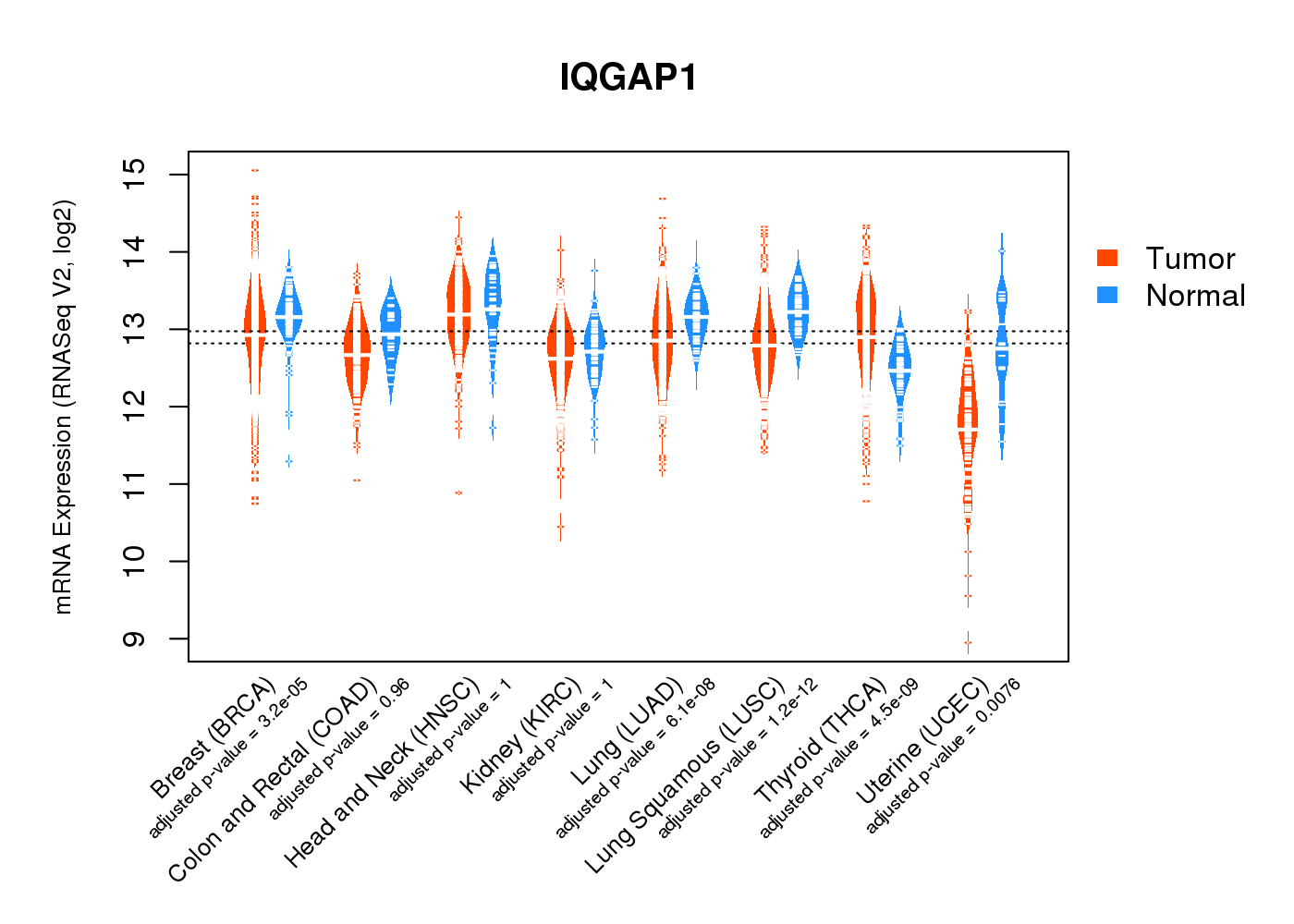 |
| Top |
| * This plots show the correlation between CNV and gene expression. |
: Open all plots for all cancer types
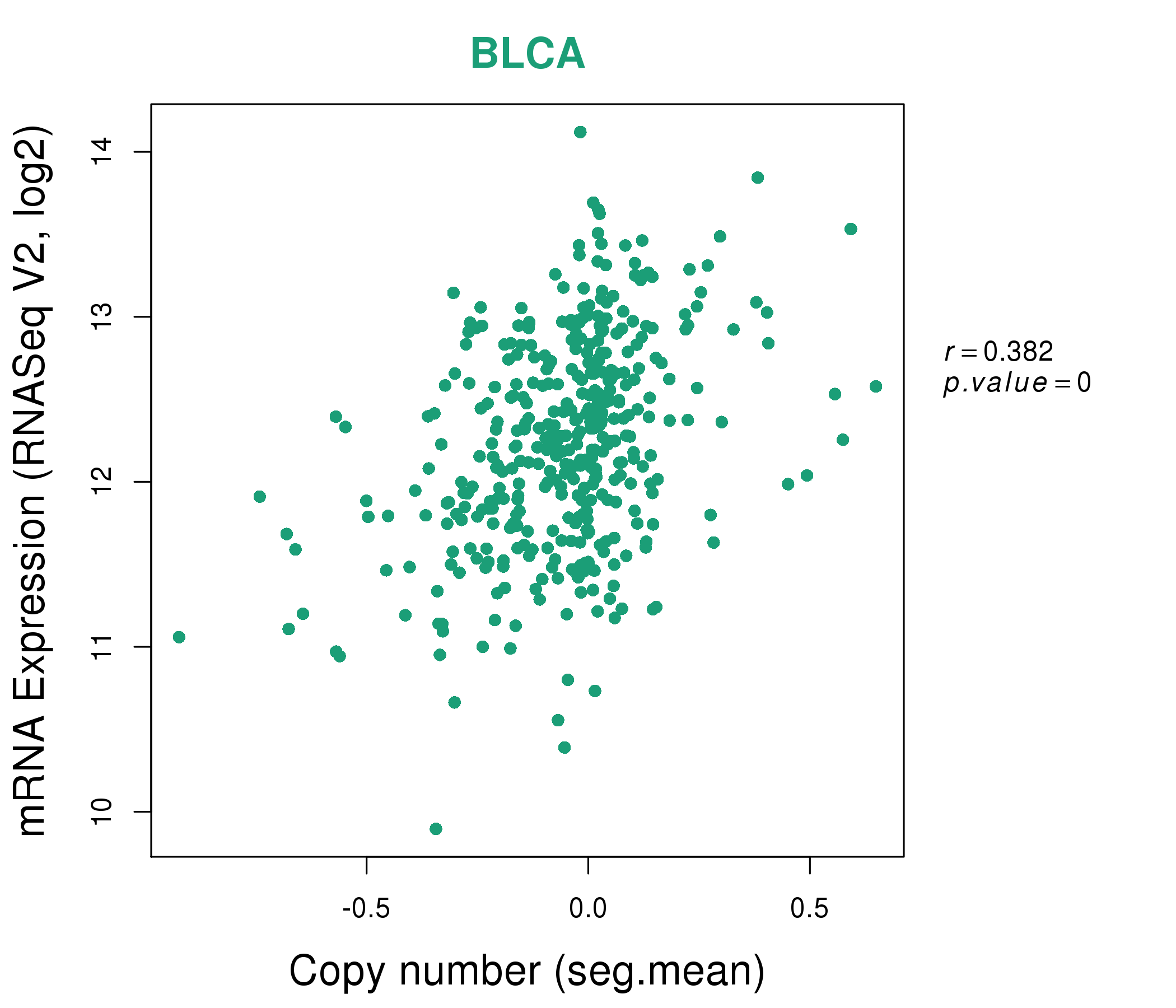 |
|
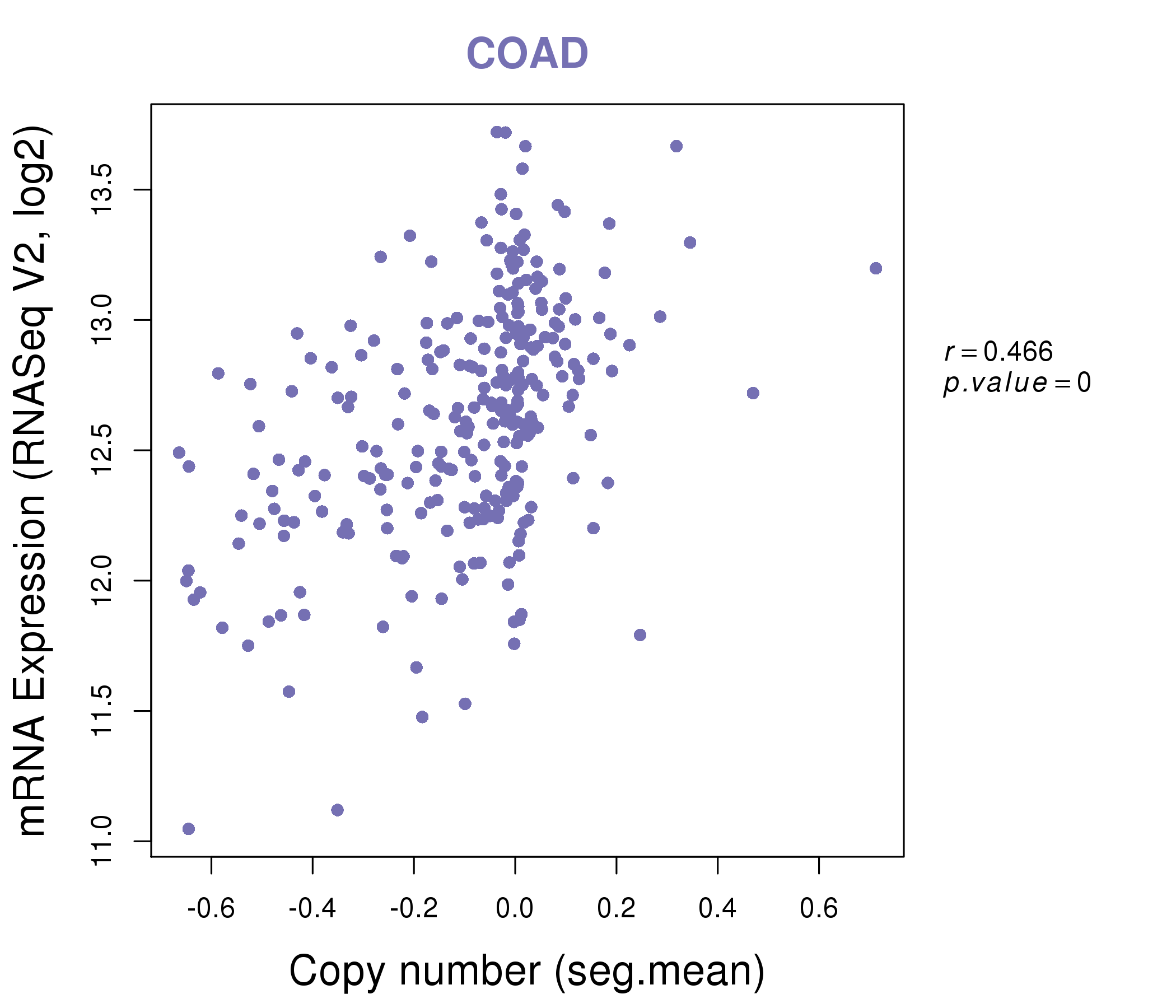 |
|
| Top |
| Gene-Gene Network Information |
| * Co-Expression network figures were drawn using R package igraph. Only the top 20 genes with the highest correlations were shown. Red circle: input gene, orange circle: cell metabolism gene, sky circle: other gene |
: Open all plots for all cancer types
 |
| ||||
| ADAM10,ASXL2,BIRC6,CRTC3,DPP8,GTF2A1,IQGAP1, IREB2,LIMS1,MAP3K2,MGA,MYO9A,PAFAH1B2,PPP4R2, RANBP2,RNF111,ROCK1,SON,STAG1,TCF12,ZNF774 | ATF6,CAMSAP2,CREB3L2,CTTNBP2NL,FNDC3A,FRMD4B,HIVEP1, IPO8,IQGAP1,CFAP97,MAPK1,MOB1A,NIPAL2,PARP4, PDCD6IP,RASAL2,SETX,SLC37A3,SWAP70,TCF12,TM9SF3 | ||||
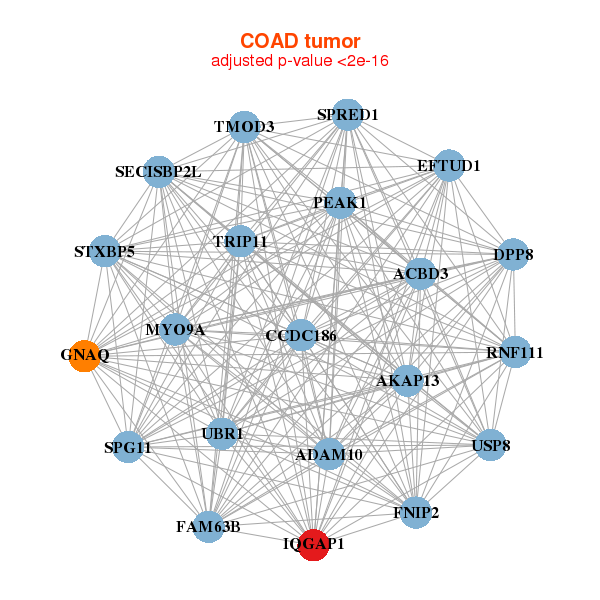 |
| ||||
| ACBD3,ADAM10,AKAP13,CCDC186,DPP8,EFTUD1,FAM63B, FNIP2,GNAQ,IQGAP1,MYO9A,RNF111,SECISBP2L,PEAK1, SPG11,SPRED1,STXBP5,TMOD3,TRIP11,UBR1,USP8 | ATP2A2,BIRC6,CLTC,EGFR,EIF4G3,ENTPD4,IGF2R, IQGAP1,MYH9,NCOR1,NFKB1,PAK2,RCOR1,ROCK2, RRBP1,SEC16A,SCAF4,SLC38A1,SPTBN1,TOP1,TRIP12 |
| * Co-Expression network figures were drawn using R package igraph. Only the top 20 genes with the highest correlations were shown. Red circle: input gene, orange circle: cell metabolism gene, sky circle: other gene |
: Open all plots for all cancer types
| Top |
: Open all interacting genes' information including KEGG pathway for all interacting genes from DAVID
| Top |
| Pharmacological Information for IQGAP1 |
| DB Category | DB Name | DB's ID and Url link |
| * Gene Centered Interaction Network. |
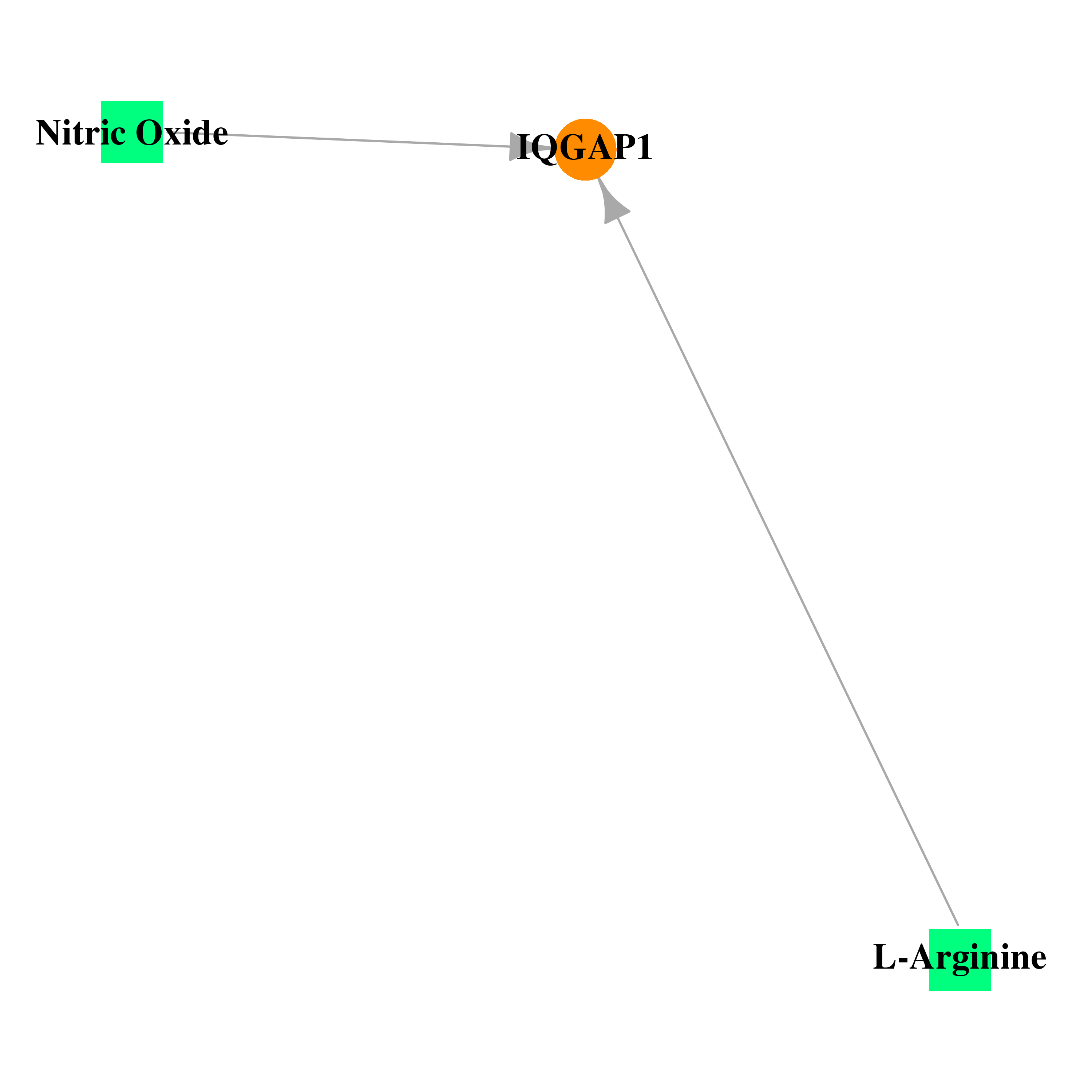 |
| * Drug Centered Interaction Network. |
| DrugBank ID | Target Name | Drug Groups | Generic Name | Drug Centered Network | Drug Structure |
| DB00125 | IQ motif containing GTPase activating protein 1 | approved; nutraceutical | L-Arginine | 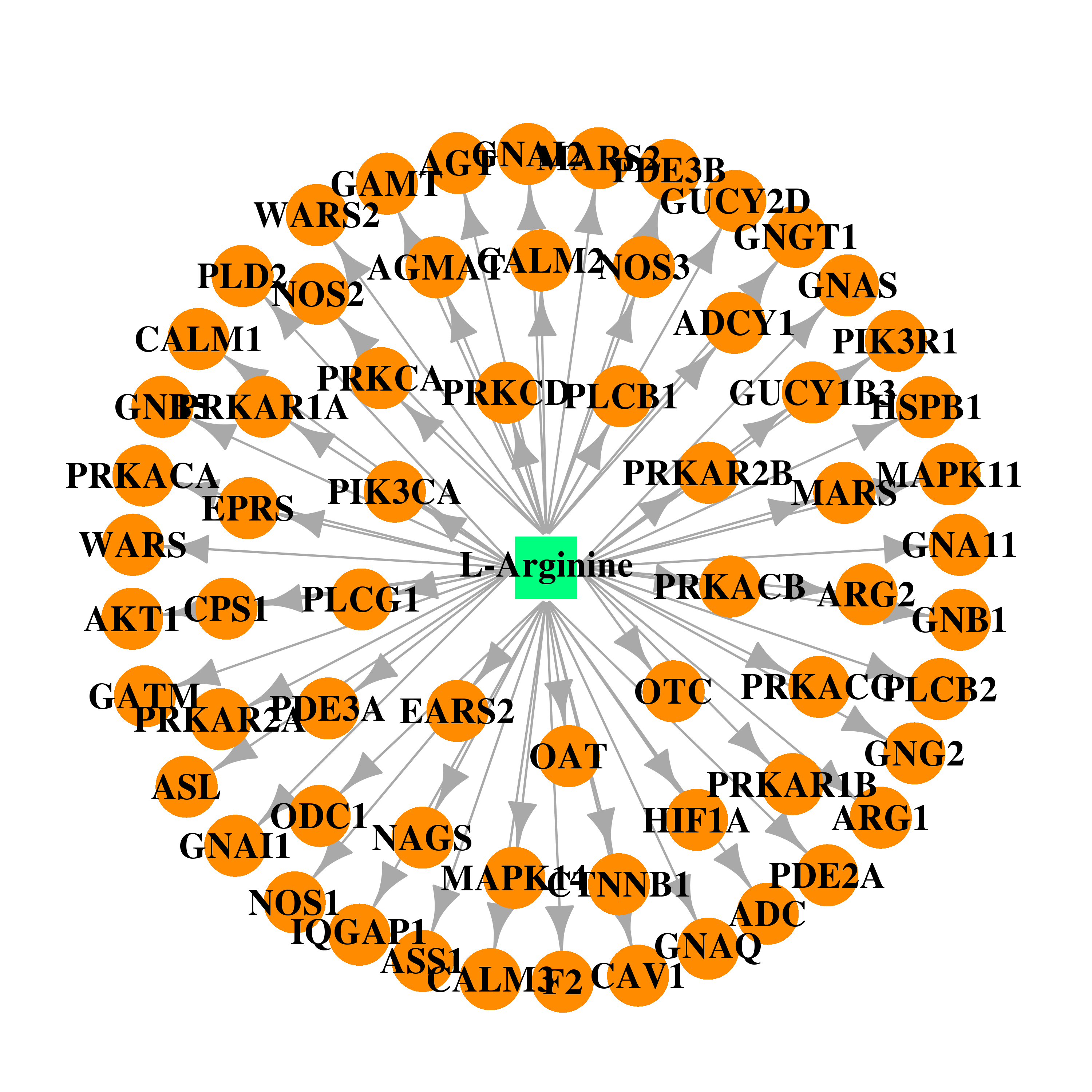 | 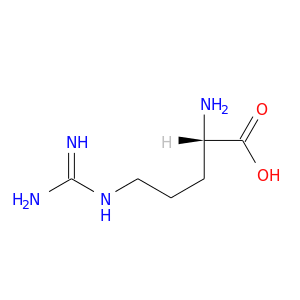 |
| DB00435 | IQ motif containing GTPase activating protein 1 | approved | Nitric Oxide |  |  |
| Top |
| Cross referenced IDs for IQGAP1 |
| * We obtained these cross-references from Uniprot database. It covers 150 different DBs, 18 categories. http://www.uniprot.org/help/cross_references_section |
: Open all cross reference information
|
Copyright © 2016-Present - The Univsersity of Texas Health Science Center at Houston @ |






